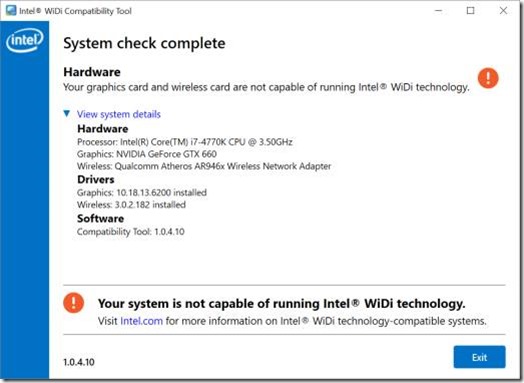One of the more promising additional features in Windows 10 was the apparent ease with which you can display your computer display on to your TV set using the “cast to…” feature. If only it were as easy as that.
The web is full of half-assed articles thrown up by Google whenever you search for how to cast your Windows 10 display to a TV. None of them actually tell you how to do it on a PC – it’s inevitably some American tablet or a smartphone they’re talking about, running Android – not Windows.
Even Microsoft online support doesn’t know exactly what it is talking about. I spent some time with them over the issue and they wanted to selectively begin to disable every installed service to “check for conflicts”. I told them that it wasn’t that, because I can’t cast from my Surface Pro 2, either.
In the course of my investigations, I discovered that the casting technology in question – Miracast – needs to be supported by your graphics card (I’ve since discovered that your WiFi card needs to support it, too). When I contacted NVIDIA to see if my GeForce GTX 660 had such compatibility, I was informed that NONE of their current graphics cards does.
Then I found this link on Intel’s website. It is a small tool which checks to see if you can run WiDi (as it is called) on your system. Here’s what it told me:

If nothing else, I can now stop worrying about why I can’t get it to work. On my desktop, at least.
Because my Surface Pro 2 reports that it CAN support WiDi. Now I need to try and figure out why it won’t bloody work when I try to cast to my Amazon FireStick – with Amazon’s online support being pretty useless in not saying if Windows can cast to it or not.
In a nutshell, if you are having problems using the supposedly simple “cast to…” feature of Windows 10, unless your PC is brand new, top of the range, and doesn’t have an NVIDIA card, you are probably not going to be able to do it.
Run the compatibility tool and go from there.